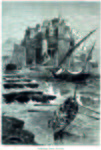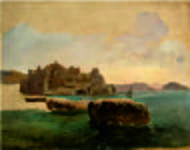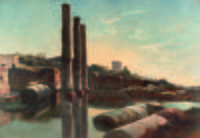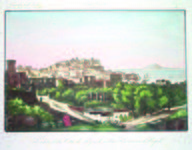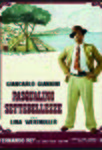Case Study B.1: Rione Terra-Potus Julius: Difference between revisions
Bianca.lughi (talk | contribs) |
Bianca.lughi (talk | contribs) |
||
| Line 72: | Line 72: | ||
=== Actors and stakeholders === | === Actors and stakeholders === | ||
* | * 'The archaeological sit Rione Terra is run by the Municipality of Pozzuoli. In the 90s, a restoration project was initiated and a first section, about half of Rione, now has buildings which have been completely saved and restored. The area is known for its naturalistic, landscape, cultural and archaeological uniqueness. Also, there are some other people, who helps to improve the area, such as locals, business man, investors, and even tourists.' | ||
* ''Draw a stakeholder and/or power map: Who is affected highly but with low power? Who has high power but is not affected?'' | * ''Draw a stakeholder and/or power map: Who is affected highly but with low power? Who has high power but is not affected?'' | ||
<gallery caption=" " widths="500px" heights="200px" perrow="5"> | <gallery caption=" " widths="500px" heights="200px" perrow="5"> | ||
Revision as of 18:22, 4 April 2019
>>>back to working groups overview
Rationale
- Why do you think this case is relevant? What is your hypothesis considering the landscape challenges?
- Format: 3-4 sentences
Location and scope
You can edit this map with the map editor
A Landscape System Analysis
A.1 Landscape layers and their system context
Geomorphology, landscape units and coastal typology
- Description of evolution, status quo and driving forces, is the coastal typology changing? Why is that? (approx 200 signs)
- add 1-2 graphical representations to the image gallery, you can add more if you like
- Yourcase landscapeunits1.jpg
add a caption
- Yourcase landscapeunits2.jpg
add a caption
Land use
- settlements, infrastructure, agriculture, resource extraction, natural areas, energy production...
- description of evolution, status quo and driving forces, is the land use likely to change? Why is that? (approx 200 signs)
- add 1-2 graphical representations to the image gallery, you can add more if you like
- Yourcase landuse1.jpg
add a caption
- Yourcase landscapeunits2.jpg
add a caption
- Yourcase landscapeunit3.jpg
add a caption
Green/blue infrastructure
Blue and Green infrastructures provides planners, developers and citizens with opportunities to rethink their relationships with the environment. Due to the strong presence of these in the territory, in the study area these represent a potential resource for the development of sustainable economies and tourism.
- The Gauro mountain represents the highest volcanic building in the Phlegrean area. The structure is in yellow tuff, in fact, there are some tuff caves now closed. It is in a central position respect to the regional park of the Phlegrean fields. Its structure is bounded by the peaks of Monte Barbaro and Monte Sant'Angelo and is degraded due to atmospheric agents. The mountain is also recognizable from the port of Pozzuoli.
- The port of Pozzuoli has been of great importance since the ancient Greeks. It over the last two thousand years has had several changes due to alterations in the coastline, because of bradyseism. Originally the port was ahead of the current one, while in 1200 the sea reached the area where today it is the Cumana. A new raising is gradually pushing the shoreline away.Many boats leave from the port of Pozzuoli to devote themselves to fishing which is a very important resource for the Phlegraean town.
The Natura 2000 network, provides the enhancement and protection of green spaces, as a habitat of flora and fauna characteristic of the Phlegrean territory, but also because they represent green lungs in an area with a high rate of urbanization. The Mount Gauro,the underwater archaeological reserve of Baia and the Pozzuoli coast represent a uniqueness in the landscape and a place that increases the healthiness of citizens, according to the PUC of Pozzuoli of 2016.The restitution of the Phlegrean coast to the citizens and the protection of marine biodiversity, would lead a strong increase in tourism and economic activities, as well as a greater awareness of the users.
- Your case green blue infrastructure1.jpg
add a caption
- Your case green blue infrastructure2.jpg
add a caption
Actors and stakeholders
- 'The archaeological sit Rione Terra is run by the Municipality of Pozzuoli. In the 90s, a restoration project was initiated and a first section, about half of Rione, now has buildings which have been completely saved and restored. The area is known for its naturalistic, landscape, cultural and archaeological uniqueness. Also, there are some other people, who helps to improve the area, such as locals, business man, investors, and even tourists.'
- Draw a stakeholder and/or power map: Who is affected highly but with low power? Who has high power but is not affected?
- Your case your powermap.jpg
add a caption
Sacred spaces and heritage
- Which places/elements hold cultural value and to whom?
- You may add a map and some images, please also explain in your caption why these elements are valuable
- Your case sacredspace1.jpg
add a caption
- Your case sacredspace2.jpg
add a caption
- Your case sacredspace3.jpg
add a caption
Visual appearance and landscape narrative
- Which elements are essential for the landscape character?
- Has the landscape been painted or otherwise depicted, when and whom? Which elements are essential?
- Which narratives exist? Who has written about this landscape or depicted it in some way?
- You can add text and images
A.2 Summary of you landscape system analysis and your development Targets
- You can summarize your findings with an DPSI(R) Model or a Spider Diagram
- Link back to the Sustainable Development Goals: Which goals are at risk?
- What is your hypothesis for this landscape?
- Visualise your hypothesis with one graphic/pict
- Are there any existing initiatives taking action in this landscape? Do you have a critical perspective on that?
- Add text and visuals
- Your case your spider diagram or dpsir model.jpg
explain your analysis briefly in the caption
- Your case your hypothesis visual.jpg
explain your hypthesis briefly in the caption
A.3 Theory reflection
- Reflect on at least three international policy documents in relation to their local landscape case
- choose one international, one European and one national document
- You can choose references from our reading list
- Scope: 250 words
A.4 References
- give a full list of the references you have used for this section
Phase B: Landscape Evaluation and Assessment
B.1 Assessment Strategy
- Based on the hypothesis derived from your previous landscape systems analysis you are now asked to define the goals for assessing the landscape. Your assessment is the basis for evaluating the landscape status.
- Which elements and phenomena need to be mapped, why and how?
- This a text contribution, max 250 words
B.2 Mapping
- As defined by your assessment strategy you conduct the mapping and present your findings here
- As a minimum, at least three different themes need to be mapped, you may choose more if needed
- Your case your assessment mapping themel.jpg
briefly explain the findings of your mapping
- Your case your assessment mapping theme2.jpg
briefly explain the findings of your mapping
- Your case your assessment mapping theme3.jpg
briefly explain the findings of your mapping
B.3 Problem definition and priority setting
- Give a summary of the major findings of your mapping process, what are the problems/potentials identified?
- Draw a problems/potentials map
- Set priorities for the most relevant issues
- Your case problems potentials map.jpg
add caption here
B.4 Theory reflection
- Please reflect the assessment and evaluation methods used based on at least three readings
- Did you encounter limitations'
- 200 words test contribution
B.5 References
- give a full list of the references you have used for this section
Phase C – Strategy and Master Plan
C.1 Goal Setting
- Define strategic planning objectives based on the evaluation findings
- Link back to your original targets from section one and the Development Goals
- 150 words text contribution
C.2 Spatial Strategy and Transect
- translate your strategic goals into a vision
- develop a spatial translation of your vision
- exemplify your vision in the form of a transect with concrete interventions
- add map(s) and visualizations
- Your case spatial translaton vision.jpg
add caption here
- Your case transect.jpg
add caption here
- Your case transect detail1.jpg
add caption here
- Your case transect detail2.jpg
add caption here
C.3 From Theory of Change to Implementation
- For implementing your vision: Which partnerships are needed? Which governance model is required?
- Who needs to act and how? Draw and explain a change/process model/timeline
- Which resources are needed? On which assets can you build?
- add 150 words text and visuals
- Your case spatial your governance model.jpg
add caption here
- Your case spatial your process model.jpg
add caption here
C.4 References
- give a full list of the references you have used for this section
D. Process Reflection
- Reflect in your intercultural and interdisciplinary team on the outcomes of your study
- Which limitations were you facing?
- What have you learnt from each other?
- What would you do differently next time?
- You can also use diagrams/visuals
- 250 words text

